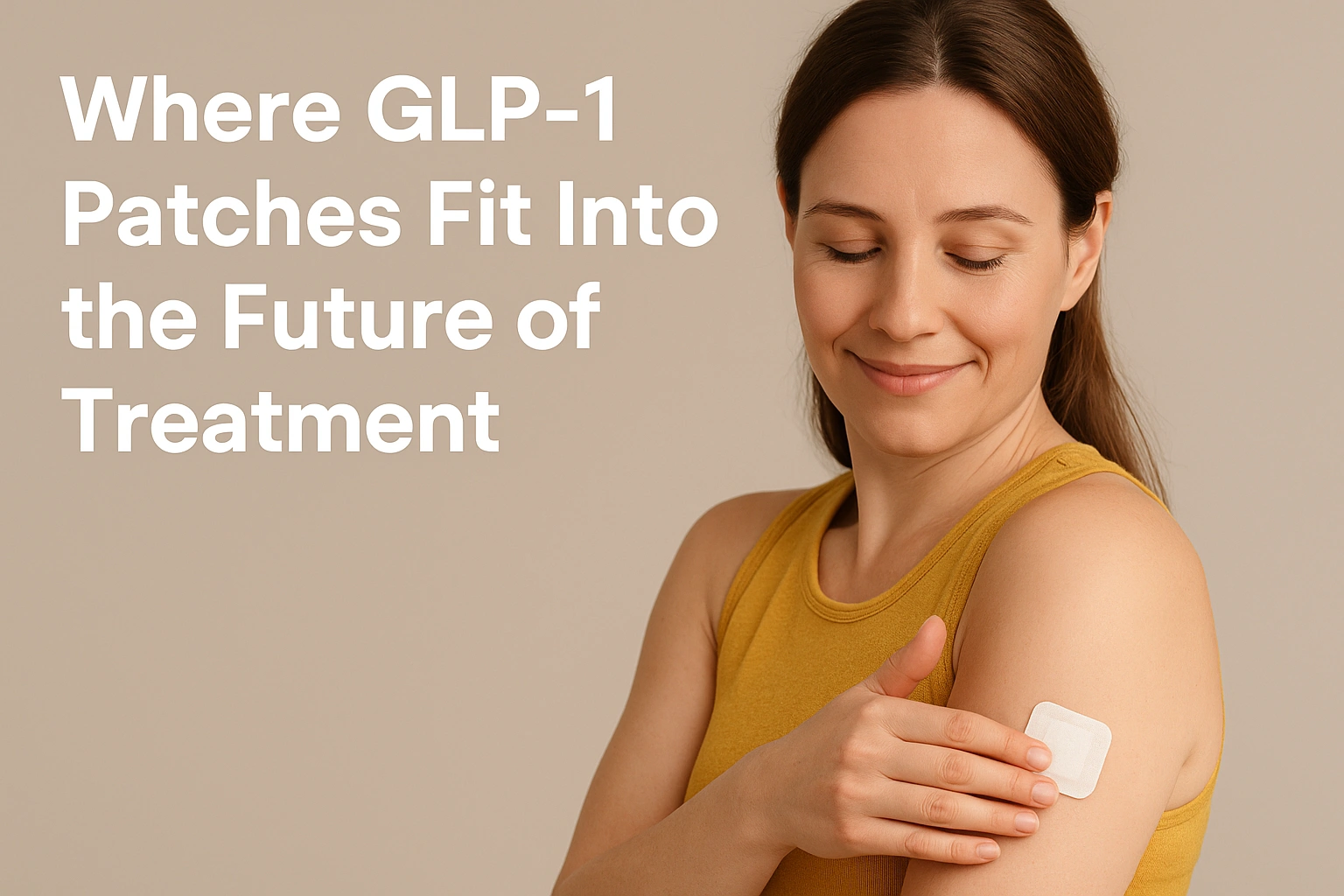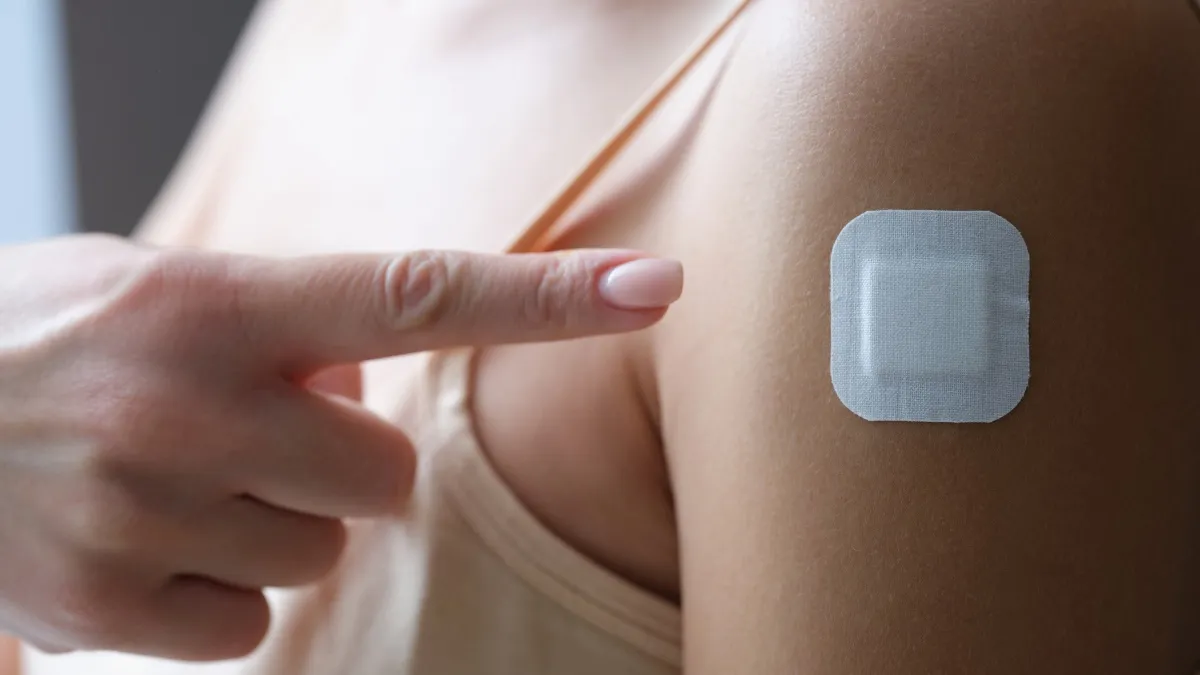The Ultimate Guide to GLP 1 Patches
The conversation around weight management and metabolic health is constantly evolving, with new approaches regularly coming into the spotlight. You might have heard about GLP-1 agonists, a class of medications making waves for their impact on blood sugar and weight. While injections are the most common form, an alternative delivery method is gaining attention: glp 1 patches. These patches aim to deliver medication through the skin, offering a potentially needle-free option. But what are they, how do they work, and what do you need to know before considering them?
This guide will walk you through the world of glp 1 patches. We’ll explore what GLP-1 is, the science behind transdermal patches, their potential benefits and drawbacks, and how they compare to established treatments. We aim to provide clear, balanced information so you can have an informed discussion with your healthcare provider.
Key Takeaways
- GLP-1’s Role: Glucagon-like peptide-1 (GLP-1) is a natural hormone that helps regulate blood sugar, slows digestion, and signals fullness to the brain.
- Transdermal Delivery: GLP 1 patches are designed to deliver a GLP-1 receptor agonist through the skin directly into the bloodstream over time.
- Current Status: As of late 2025, no glp 1 patches have been approved by the U.S. Food and Drug Administration (FDA). Many products available online may be unregulated or experimental.
- Patches vs. Injections: Patches offer a needle-free alternative to injections, but their effectiveness, dosing accuracy, and safety are still under investigation.
- Consult a Professional: Always speak with a licensed healthcare provider before trying any new health product, especially one like glp 1 patches that is not yet FDA-approved.
What is GLP-1 and Why is it Important?
Before we can understand the patches, we need to understand the hormone they are based on. Glucagon-like peptide-1, or GLP-1, is an incretin hormone your body naturally produces in the gut in response to eating food. It plays several crucial roles in your metabolic system. First, it stimulates the pancreas to release insulin, which helps lower blood sugar levels after a meal. It also suppresses the release of glucagon, a hormone that raises blood sugar. This dual action is vital for maintaining stable glucose levels. Additionally, GLP-1 slows down how quickly your stomach empties, which contributes to a prolonged feeling of fullness. It also acts directly on the brain’s appetite centers, reducing hunger signals. This combination of effects makes GLP-1 a powerful regulator of both blood sugar and body weight. Pharmaceutical GLP-1 receptor agonists are synthetic versions of this hormone, designed to be more potent and last longer in the body than the natural version.
What Are GLP 1 Patches and How Do They Claim to Work?
GLP 1 patches are a form of transdermal drug delivery system designed to administer GLP-1 receptor agonists through the skin. Instead of an injection, you apply a small adhesive patch, similar to a nicotine patch, to a clean area of your body. The patch contains a reservoir of the active compound, which is intended to be slowly absorbed through the layers of your skin and into the tiny blood vessels beneath. The goal is to provide a steady, continuous release of the medication into your bloodstream over a set period, which could be a day or even a week, depending on the design. This method, known as transdermal delivery, bypasses the digestive system entirely. Proponents suggest this could lead to more stable drug levels in the body, potentially reducing the peaks and troughs associated with other delivery methods and possibly minimizing certain side effects. However, the skin is an effective barrier, and getting large molecules like GLP-1 agonists to pass through it effectively is a significant scientific challenge.
The Science of Transdermal Delivery
Getting a medication from a patch into your bloodstream is a complex process. The skin’s outermost layer, the stratum corneum, is designed to keep foreign substances out. For a transdermal patch to work, its formulation must include penetration enhancers that temporarily and reversibly disrupt this barrier, allowing the drug molecules to pass through. The size of the drug molecule is a critical factor; smaller molecules pass through more easily. GLP-1 agonists are relatively large protein-based molecules, which makes transdermal delivery particularly difficult. Researchers are actively exploring various technologies to overcome this, such as microneedle arrays. Microneedle glp 1 patches would feature hundreds of tiny, painless needles that create micro-channels in the skin, allowing the drug to bypass the main barrier and be absorbed more efficiently. These technologies are still largely in the research and development phase and are not yet widely available in commercial products in the United States.
The Current Scientific and Regulatory Status of GLP 1 Patches in the U.S.
This is the most critical point for anyone in the United States considering glp 1 patches. As of late 2025, the U.S. Food and Drug Administration (FDA) has not approved any glp 1 patches for medical use. While major pharmaceutical companies are actively researching this technology, it remains in the experimental stage. The FDA’s approval process is rigorous, requiring extensive clinical trials to prove a product is both safe and effective for its intended use. Without this approval, any glp 1 patches sold online or through other channels are considered unregulated. This means they have not been vetted by a governing body for safety, dosage accuracy, purity, or effectiveness. Consumers should be extremely cautious, as these products could be ineffective at best or harmful at worst. They may not contain the advertised ingredient, could contain incorrect dosages, or may include undisclosed substances. Always prioritize FDA-approved treatments prescribed by a healthcare professional.
Potential Benefits and Limitations
While still theoretical for the U.S. market, the potential benefits of an effective and approved glp 1 patches system are clear. The most obvious advantage is avoiding needles. Many people have a fear of injections or find self-injecting inconvenient, so a simple patch could significantly improve comfort and adherence to treatment. A patch could also provide a more consistent level of medication in the bloodstream, avoiding the initial spike that can occur after an injection. This steady state might lead to fewer side effects like nausea, which is common with GLP-1 agonists. However, the limitations are substantial. The primary challenge is ensuring effective and reliable absorption through the skin. Skin type, hydration, patch location, and even sweat can affect how much drug is delivered. There’s also a risk of skin irritation, allergic reactions, or infections at the application site. Until clinical trials prove otherwise, the effectiveness of any currently available glp 1 patches is unproven.
Comparison of GLP-1 Delivery Methods
To better understand where glp 1 patches might fit in, it’s helpful to compare them to existing, approved delivery methods for GLP-1 agonists.
|
Method |
How It Works |
Pros |
Cons |
Typical Use |
|---|---|---|---|---|
|
Injection |
Medication is injected under the skin (subcutaneously) with a small needle. |
Highly effective; precise dosing; proven in clinical trials. |
Requires self-injection; potential for injection-site reactions; some find it inconvenient. |
Daily or weekly injections for type 2 diabetes and/or weight management. |
|
Oral Pill |
A pill taken daily on an empty stomach with a small amount of water. |
Needle-free; convenient for some. |
Strict administration rules (e.g., must wait 30 mins before eating/drinking); potential for gastrointestinal side effects; lower bioavailability than injections. |
Daily pill for type 2 diabetes. |
|
GLP 1 Patches |
A patch is applied to the skin to deliver medication transdermally. |
Potentially needle-free; potentially offers continuous delivery. |
Currently not FDA-approved in the U.S.; unproven efficacy and safety; potential for skin irritation; dosing accuracy is a major challenge. |
Experimental; not approved for medical use. |
Evaluating Products and Spotting Misinformation
When exploring options online, it’s easy to encounter misleading claims. Since glp 1 patches are not yet an established medical product in the U.S., you must be a skeptical consumer. Be wary of websites that use sensational language like “miracle cure,” “melt fat away,” or “secret to weight loss.” Legitimate medical information is typically balanced and cautious. Check for a lack of scientific references or citations to clinical trials. Another red flag is the absence of information about the manufacturer or the ingredients in the product. If a seller pressures you with “limited time offers” or requests personal health information outside of a secure patient portal with a licensed provider, you should be concerned. Authentic health resources, like those you might find referenced on a trusted site like https://versaillesblog.com/, emphasize consulting with medical professionals and rely on peer-reviewed evidence. Always question where the information is coming from and what the seller’s motivation is.
Potential Safety Concerns and Side Effects
Because there are no FDA-approved glp 1 patches, their specific safety profile is unknown. However, we can infer potential risks based on the active ingredients they claim to contain and the transdermal delivery method. The side effects associated with approved GLP-1 agonists like semaglutide and liraglutide are well-documented and primarily gastrointestinal. These include nausea, vomiting, diarrhea, constipation, and abdominal pain. It’s possible that a patch could cause similar issues. In addition, transdermal patches carry their own set of risks. Skin irritation, redness, itching, or even a rash at the application site are common. In some cases, people can develop an allergic sensitivity to the adhesive or other components in the patch. The biggest unknown is dosage. An unregulated patch could deliver too little medication, making it ineffective, or too much, increasing the risk of severe side effects like hypoglycemia (low blood sugar), especially if used with other diabetes medications.
Who Might Be a Candidate for Future Patches?
Individuals with Needle Phobia
Once a safe and effective version is developed and approved, the most obvious candidates for glp 1 patches would be individuals with a significant fear of needles (trypanophobia). For this group, a patch could be the difference between adhering to a prescribed treatment plan and avoiding it altogether. The psychological barrier presented by self-injection is a real and often underestimated factor in patient care. A simple, stick-on solution removes this hurdle, making treatment more accessible and less stressful. This could be particularly beneficial for long-term management of chronic conditions like type 2 diabetes or obesity, where consistent medication use is key to achieving and maintaining health goals. By eliminating the daily or weekly anxiety associated with injections, glp 1 patches could empower these patients to take a more active and comfortable role in their own health management.
The Role of Lifestyle: Diet, Movement, and Sleep

It is crucial to remember that no medication, whether an injection, pill, or a future patch, is a standalone solution. GLP-1 agonists are tools designed to work alongside lifestyle modifications, not replace them. A balanced, nutrient-dense diet is the foundation of metabolic health. Focusing on whole foods like vegetables, lean proteins, and healthy fats helps regulate blood sugar and supports the mechanisms targeted by GLP-1 medications. Regular physical activity or movement is equally important. Exercise improves insulin sensitivity, helps build lean muscle mass (which boosts metabolism), and contributes to overall cardiovascular health. Finally, never underestimate the power of sleep. Poor sleep can disrupt hormones that control appetite, like ghrelin and leptin, and can also impair insulin sensitivity. Combining a GLP-1 therapy with healthy habits creates a powerful, synergistic effect that leads to more sustainable and comprehensive health improvements than relying on medication alone.
How to Talk to Your Healthcare Provider
If you are curious about GLP-1 therapies, including the future possibility of glp 1 patches, the best first step is to schedule a conversation with your doctor or a licensed healthcare provider. Be prepared to discuss your complete health history, including any current conditions and medications you are taking. It’s helpful to be honest about your goals, whether they relate to weight management, blood sugar control, or both. You can ask them directly, “What are your thoughts on GLP-1 receptor agonists for someone with my health profile?” You can also bring up the different delivery methods, saying something like, “I’ve heard about injections and oral forms, and I’m curious about emerging technologies like glp 1 patches. What is the current medical consensus on them?” This opens the door for your provider to give you accurate, evidence-based information and explain why certain treatments are approved and recommended while others are not. They can help you understand the real risks and benefits, separating medical science from market hype.
Conclusion
The concept of glp 1 patches represents an exciting frontier in drug delivery, promising a user-friendly, needle-free alternative to current GLP-1 treatments. The potential to offer a steady, continuous dose of medication could improve both comfort and outcomes for many people. However, it’s vital to ground our enthusiasm in reality. As of today, this technology is still in development, and no glp 1 patches have been approved by the FDA for use in the United States. Any products you find for sale online are unregulated and come with significant risks. The safest and most effective path forward is to work closely with your healthcare provider. They can guide you toward proven, FDA-approved therapies that are right for your individual needs while keeping you informed about legitimate scientific advances as they happen.
Frequently Asked Questions (FAQ)
Are glp 1 patches available in the United States?
No, as of late 2025, there are no glp 1 patches that have been approved by the U.S. Food and Drug Administration (FDA). All approved GLP-1 receptor agonists are currently available as either injections or oral pills.
Are the glp 1 patches sold online safe?
Products sold online are unregulated and have not been tested by the FDA for safety, quality, or effectiveness. They could contain the wrong ingredient, an incorrect dose, or even harmful substances. It is not recommended to use unregulated medical products.
How would glp 1 patches differ from injections?
The primary difference is the delivery method. A patch is applied to the skin, while an injection is administered under the skin. A patch would aim for continuous, slow absorption, whereas an injection delivers the dose all at once, though it is still released over time in the body.
What are the potential side effects of GLP-1 therapies?
The most common side effects of FDA-approved GLP-1 agonists are gastrointestinal, including nausea, vomiting, diarrhea, and constipation. A future patch could have similar side effects, in addition to potential skin irritation at the application site.
Should I try glp 1 patches if I find them online?
No. You should never use a medication or medical device that has not been approved by the FDA and prescribed by a licensed healthcare provider. Doing so can be ineffective and potentially dangerous to your health. Always consult with your doctor before starting any new treatment.














Post Comment